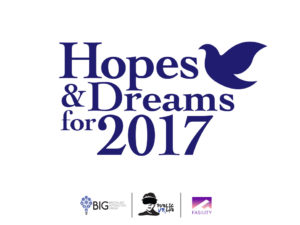One goal of the Public VR Lab and this project is to reduce the barriers to entry and show that virtual reality content creation can be easily created and shared on 3D web sites using WebVR and the programming language A-Frame, an open source tool created by Mozilla.
Kathy Bisbee, co-founder of the Public VR Lab, said that the accessibility to mass media, and gaining access to equipment and training are issues that traditional community media and VR share, “The Hopes & Dreams project and WebVR help lower the barriers to entry in the virtual reality (VR) and augmented reality (AR) space bringing new creators and storytellers into our community media centers to use our 360 cameras, and take classes in mixed reality content creation.”
“VR/AR is still in its nascent stages, but it’s growing fast. Many creators and storytellers don’t have the technical tools or the new skills required for this new industry,” citing the need for public accessibility to be part of the VR conversation.“
Nir Darom, BIG’s lead creative designer shared how the storytelling works in VR: “In the Hopes and Dreams project we wanted to let viewers feel as though they were right there, inside the circle of people sharing their hopes and dreams. Once you’re inside the circle, whoever you visually “click on” begins talking. This immediacy is what makes VR such a great documentary tool.”
When Fasility’s co-founders heard about the Public VR Lab’s mission, they knew WebVR and A-Frame would be a natural fit. “WebVR has the power to transform human storytelling,” said Kathy Trogolo, Fasility’s CEO. “Creators and storytellers are sharing something precious. Thanks to VR, their words and emotions are almost as impactful as they would be in person; plus, the interactive experience allows the viewer to pause and reflect on the content more deeply. The Public VR Lab and the Hopes & Dreams project is a perfect match with our mission to empower authors to create 3D immersive and interactive webspaces.”
Top five reasons WebVR is a key to the future of accessibility in VR/AR
- Works on the smartphone you already have in your hand
- Anyone can be an author – no expensive software or hardware needed
- Incorporates browser’s built-in accessibility features
- Works across mobile, desktop, and VR equipment like HTC Vive and Oculus Rift
- No app store!
Learn more about using WebVR to create virtual reality content at the free Boston Meetup at the Public VR Lab on June 8th, 2017 in Brookline, MA. Register here: https://www.eventbrite.com/e/web-vr-and-you-tickets-34548544627
To view the Hopes and Dreams Virtual Reality project, visit the site below: http://brooklineinteractive.org/had
About the Public VR Lab
@PublicVRLab
Over the past year the Lab has demoed over 90 virtual reality experiences at senior and teen centers, offered free bi-weekly VR sessions at its Boston-area labs, curated interactive content for film festivals, launched a VR Academy with free and low-cost classes, organized a regional virtual reality hackathon focused on climate change, and created the first private-public partnership for two location-based augmented reality community storytelling projects.
In its second year, the Lab is building on its long tradition of public access television, to provide increased accessibility and digital inclusion with an immersive media grant program, and teaching specialized classes at their low-cost VR Academy to support the production of experiential storytelling, immersive journalism, storytelling in games, and new forms of artistic expression in the public sphere.
About Fasility
@fasility_vr
Fasility is a WebVR consultancy focused on education and user empowerment. Fasility helps their clients create web-based VR experiences that are easy to navigate, impactful, and play back on desktop, cardboard, and high-end VR devices. Established in 2016, Fasility prioritizes design, human factors, and interoperability to reach broad and inclusive audiences. Through studio projects and customized training, Fasility is bringing the power of VR to everyday content creators.


Leave a Comment
Let us know your thoughts on this post but remember to place nicely folks!